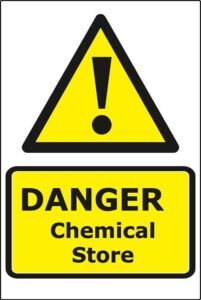The Lethal Weapon MIC (Methyl Isocyanate) Liquid: A Silent Killer
The Lethal Reality of MIC (Methyl Isocyanate) Liquid: A Danger Beyond Measure
In the annals of industrial disasters, few names invoke the level of dread and devastation as Methyl Isocyanate (MIC). The term conjures memories of the tragic Bhopal Gas Tragedy in 1984, a catastrophe that exposed the world to the horrifying consequences of mishandling this deadly chemical. Even decades later, MIC continues to symbolize the razor-thin line between industrial innovation and catastrophic risk.
What Is MIC Liquid?
Methyl Isocyanate (MIC) is a highly reactive and volatile chemical primarily used in the production of pesticides, polyurethane foam, and various plastics. It’s a colorless liquid with a sharp, pungent odor, often described as acrid and suffocating. While its industrial utility cannot be denied, the danger it poses is equally undeniable.
The properties that make MIC useful also make it extraordinarily hazardous. Its low boiling point (39.1°C) and high reactivity mean that even minor mishandling can lead to catastrophic outcomes. When exposed to water, it reacts violently, releasing toxic gases that can cause widespread harm.
The Bhopal Gas Tragedy: A Stark Reminder
No discussion of MIC is complete without revisiting the Bhopal Gas Tragedy, one of the darkest chapters in industrial history. On the night of December 2-3, 1984, approximately 40 tons of MIC leaked from a pesticide plant in Bhopal, India. The consequences were nightmarish: over 3,000 immediate deaths, tens of thousands more over the years, and countless lives permanently scarred.
Survivors described a hellish scene: burning eyes, suffocating lungs, and streets filled with panic-stricken crowds. The tragedy highlighted the catastrophic potential of MIC and the grave consequences of neglecting safety protocols. For many, the name “MIC” became synonymous with loss, pain, and devastation.
Why Is MIC Liquid So Dangerous?
- Toxicity: MIC is highly toxic to humans. Inhalation can cause severe respiratory distress, pulmonary edema, and even death. Skin and eye contact can lead to burns and long-term damage.
- Volatility: Its low boiling point means MIC rapidly transitions into a gaseous state, making containment challenging. In its gaseous form, it disperses quickly, increasing the radius of impact during a leak.
- Reactivity: MIC reacts violently with water, releasing heat and toxic gases. This property amplifies its danger in the event of accidental exposure.
- Persistence: MIC doesn’t easily degrade in the environment, prolonging its harmful effects on ecosystems and human health.
Industrial Uses: A Double-Edged Sword
The very qualities that make MIC indispensable in manufacturing also render it a constant source of risk. MIC is a key ingredient in producing carbamate pesticides, polyurethane products, and certain pharmaceutical intermediates. These applications contribute to modern agriculture and industrial efficiency, but the trade-off is an omnipresent danger that requires meticulous management.
The Emotional Toll of MIC Accidents
The aftermath of MIC-related incidents is not just physical but deeply emotional. Families torn apart by loss, communities struggling to recover, and the haunting memories of tragedy create a lasting psychological impact. The survivors of Bhopal still grapple with the trauma, their lives forever shadowed by that fateful night. Their stories are a poignant reminder that the human cost of such disasters extends far beyond the initial death toll.
Safety Protocols: The Thin Line Between Life and Death
Given the stakes, handling MIC requires a zero-tolerance approach to negligence. Key safety measures include:
- Stringent Storage Conditions: MIC must be stored in tightly sealed containers, away from water and other reactive substances, at temperatures below its boiling point.
- Advanced Leak Detection Systems: Modern facilities must invest in state-of-the-art sensors and alarms to detect even trace amounts of MIC leakage.
- Emergency Response Preparedness: Industrial plants must maintain well-rehearsed emergency response plans, including evacuation protocols and medical aid.
- Employee Training: Workers must receive rigorous training in MIC handling, emergency procedures, and the use of personal protective equipment (PPE).
- Regular Audits: Routine inspections and audits can identify potential vulnerabilities before they escalate into disasters.
The Moral Imperative
The continued use of MIC poses a moral dilemma. On one hand, its applications drive progress in agriculture and industry; on the other, the risks it brings are monumental. Is it worth endangering lives for economic gains? The answer lies in stringent regulation, technological innovation, and an unwavering commitment to safety.
A Call for Global Accountability
Governments, industries, and international organizations must work together to establish global standards for MIC handling. Transparent reporting, investment in safer alternatives, and public awareness are critical in preventing future tragedies.
Conclusion: Lessons Learned and the Path Forward
MIC liquid is a potent reminder of humanity’s dual-edged relationship with technology. It embodies both the heights of industrial achievement and the depths of its potential for destruction. The Bhopal tragedy serves as a grim lesson that safety, accountability, and ethical considerations must never be sidelined in the pursuit of progress.
As we move forward, let us honor the victims of MIC-related disasters by ensuring that such tragedies never happen again. Through innovation, vigilance, and compassion, we can navigate the delicate balance between advancement and human safety, turning the legacy of MIC from one of fear to one of responsibility and hope.














Post Comment